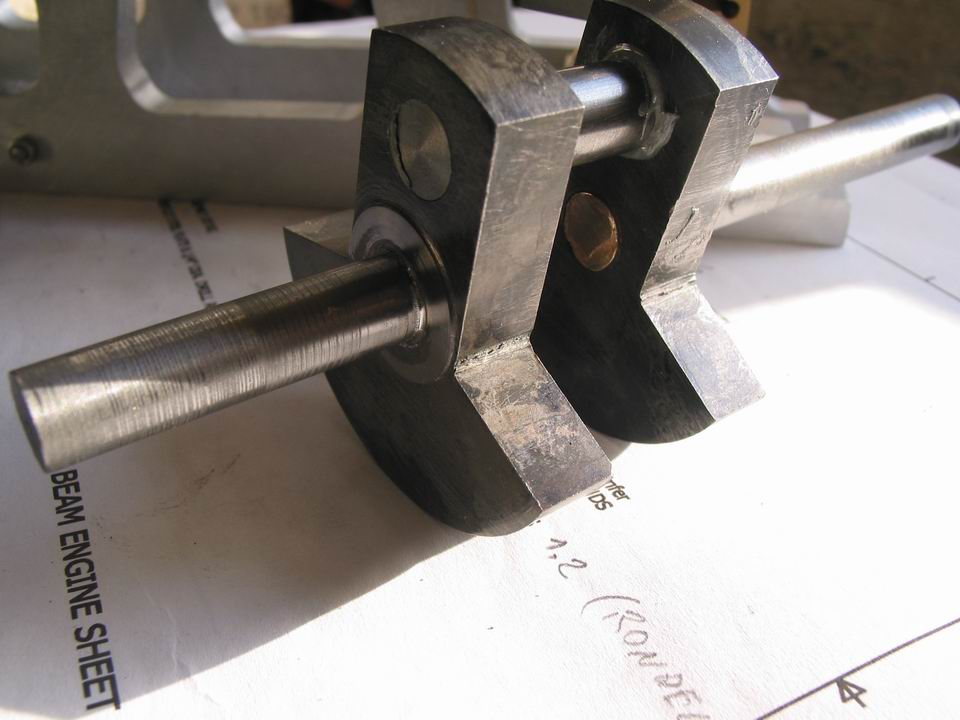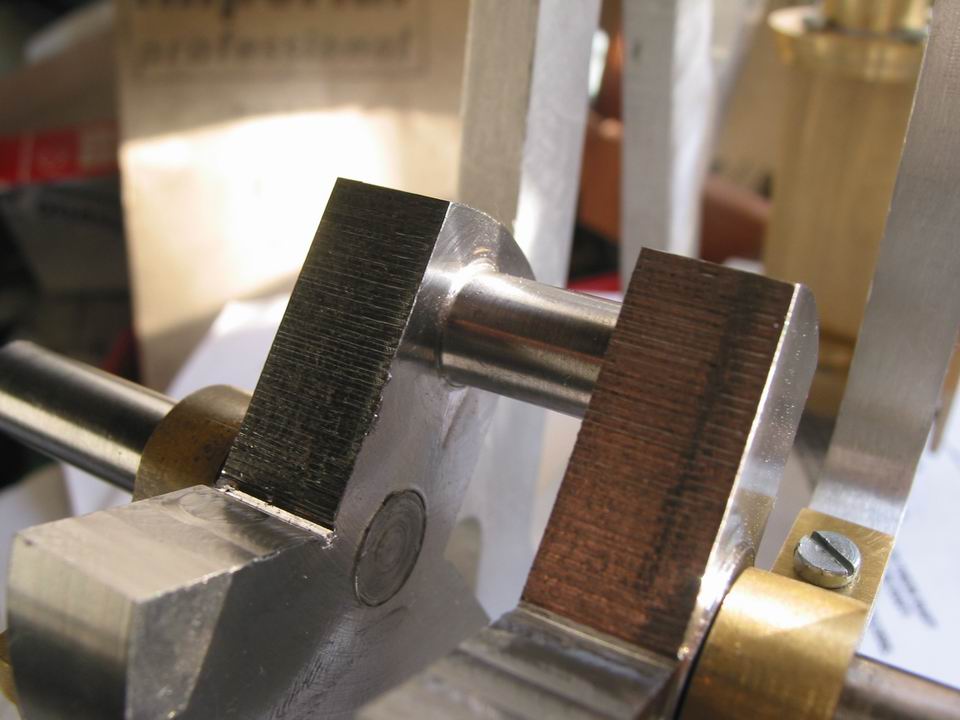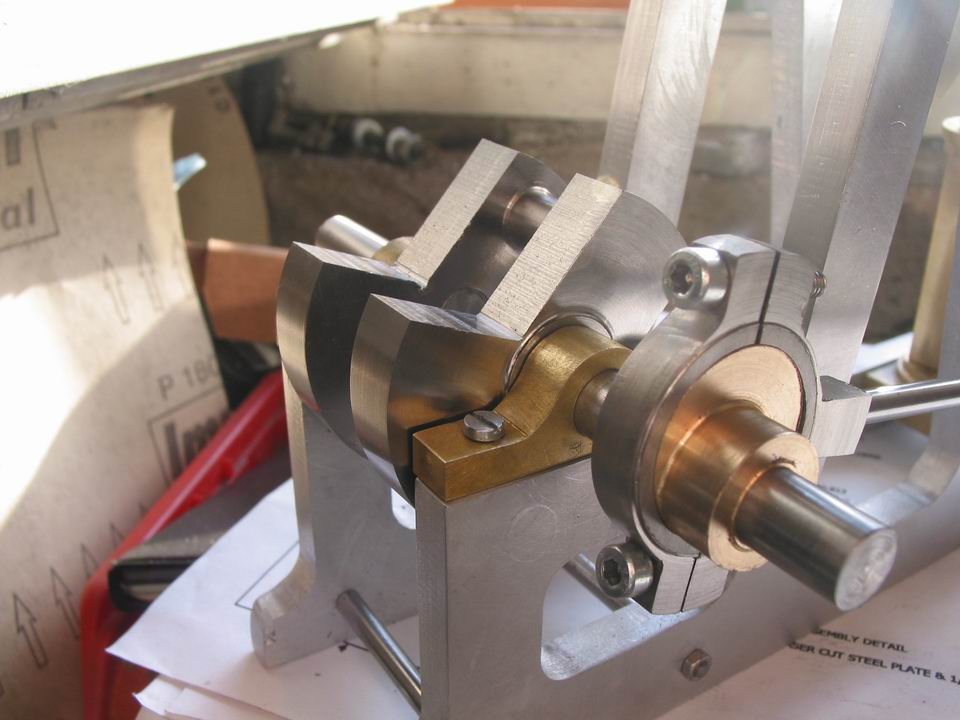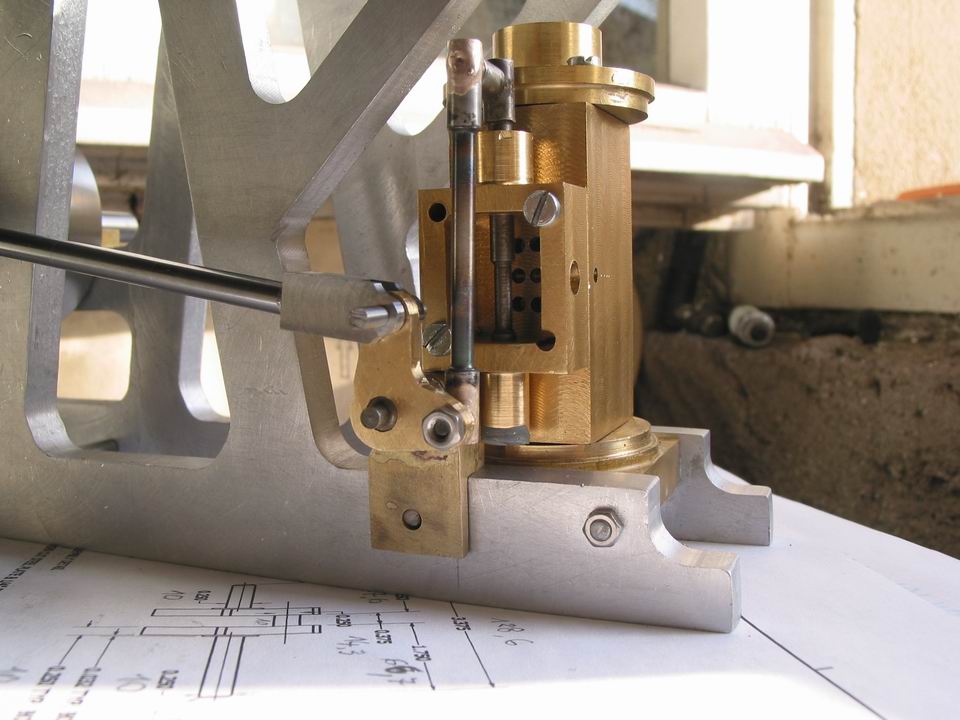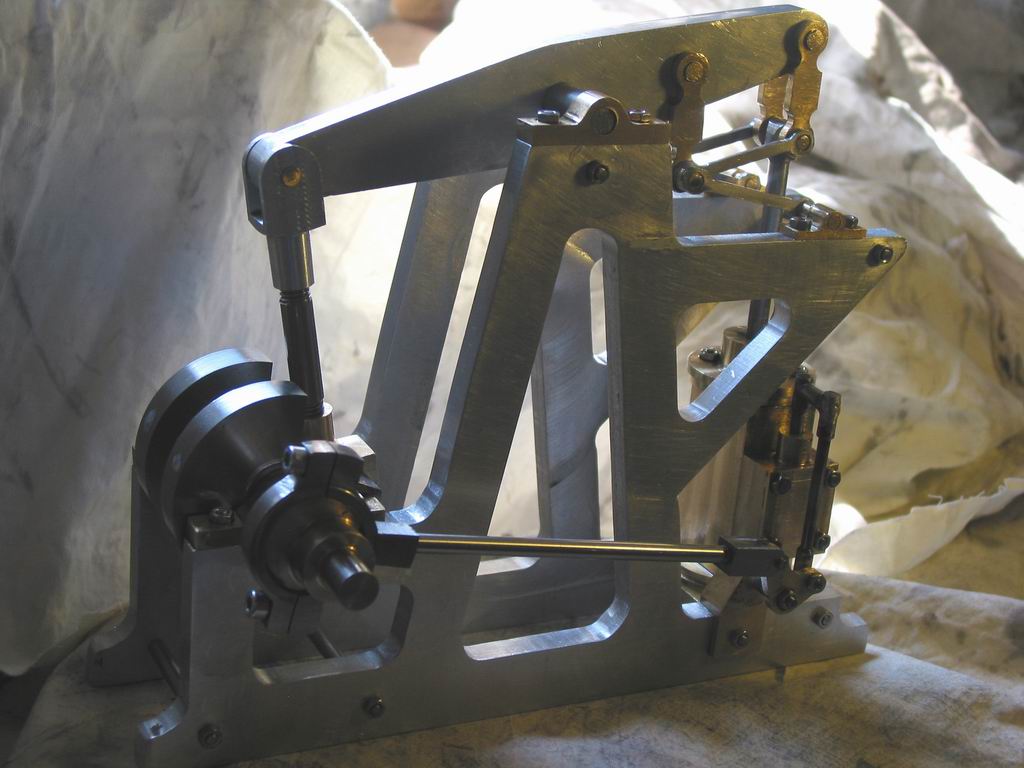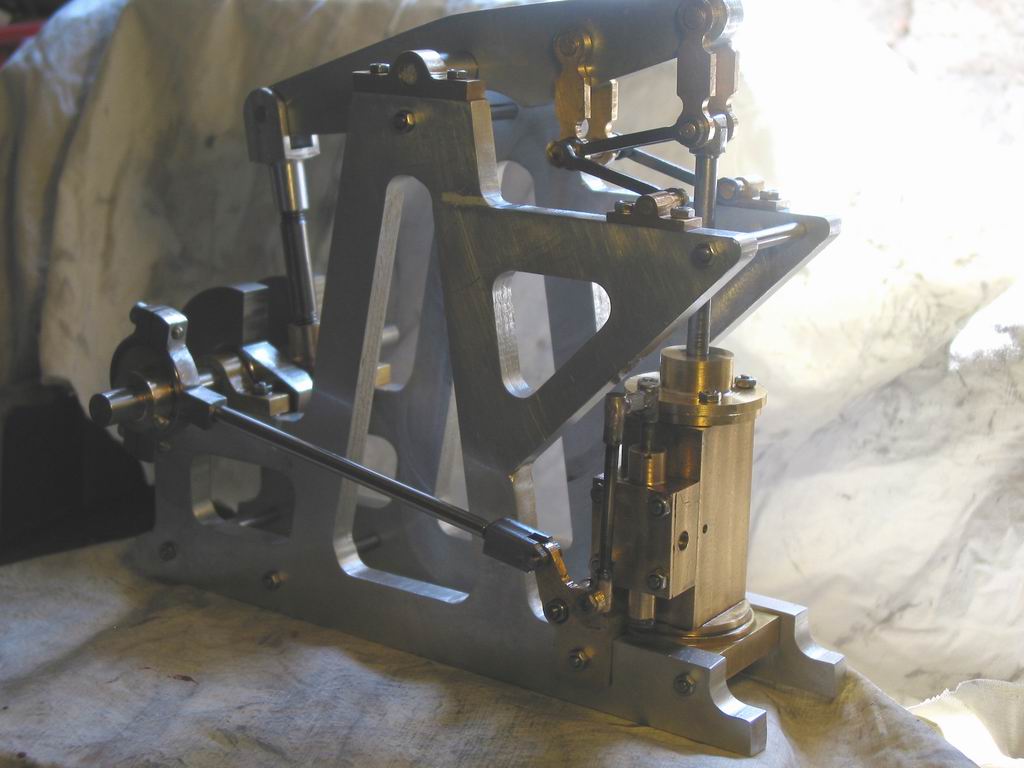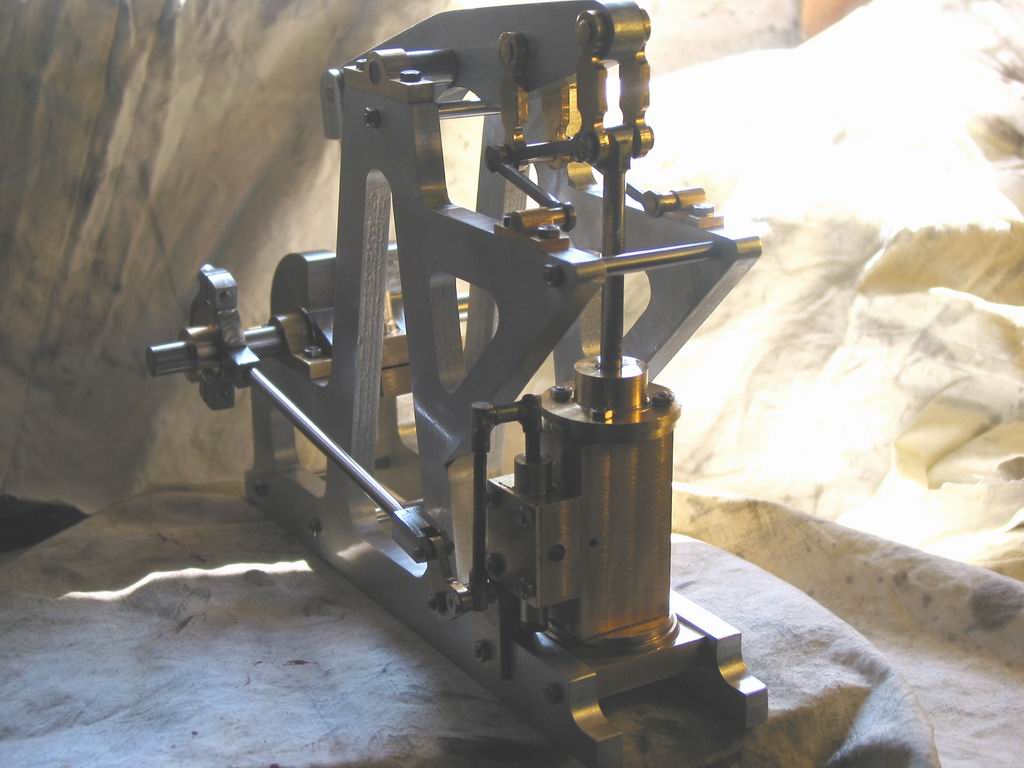Ariz
I've never silver soldered titanium, however it should work. Couple of comments based on my own experience. When you assembled the crank shaft before soldering were the bores and shafts clean? No oil or dirt allowed. Was there a little bit of clearance between the parts there has to be a space for the solder to wick (flow) into? An interference fit will not generally work. Was there a thin film of flux on the inside of the bores of the crank pieces and the shafts them selves? Without flux the parts will oxidize and the solder will not flow.
Myself I probably would have drilled a small hole slightly greater in diameter than the solder wire in each of the crank webs, like I was going to use a pin to hold the parts together. Then flux the bores and shafts. After assembling the parts I would put a small pieces of silver solder in the holes I'd drilled then heat.
It looks like you did managed to get a decent crankshaft in the end. Looks good. Keep at it.
Regards
Ernie J
I've never silver soldered titanium, however it should work. Couple of comments based on my own experience. When you assembled the crank shaft before soldering were the bores and shafts clean? No oil or dirt allowed. Was there a little bit of clearance between the parts there has to be a space for the solder to wick (flow) into? An interference fit will not generally work. Was there a thin film of flux on the inside of the bores of the crank pieces and the shafts them selves? Without flux the parts will oxidize and the solder will not flow.
Myself I probably would have drilled a small hole slightly greater in diameter than the solder wire in each of the crank webs, like I was going to use a pin to hold the parts together. Then flux the bores and shafts. After assembling the parts I would put a small pieces of silver solder in the holes I'd drilled then heat.
It looks like you did managed to get a decent crankshaft in the end. Looks good. Keep at it.
Regards
Ernie J





